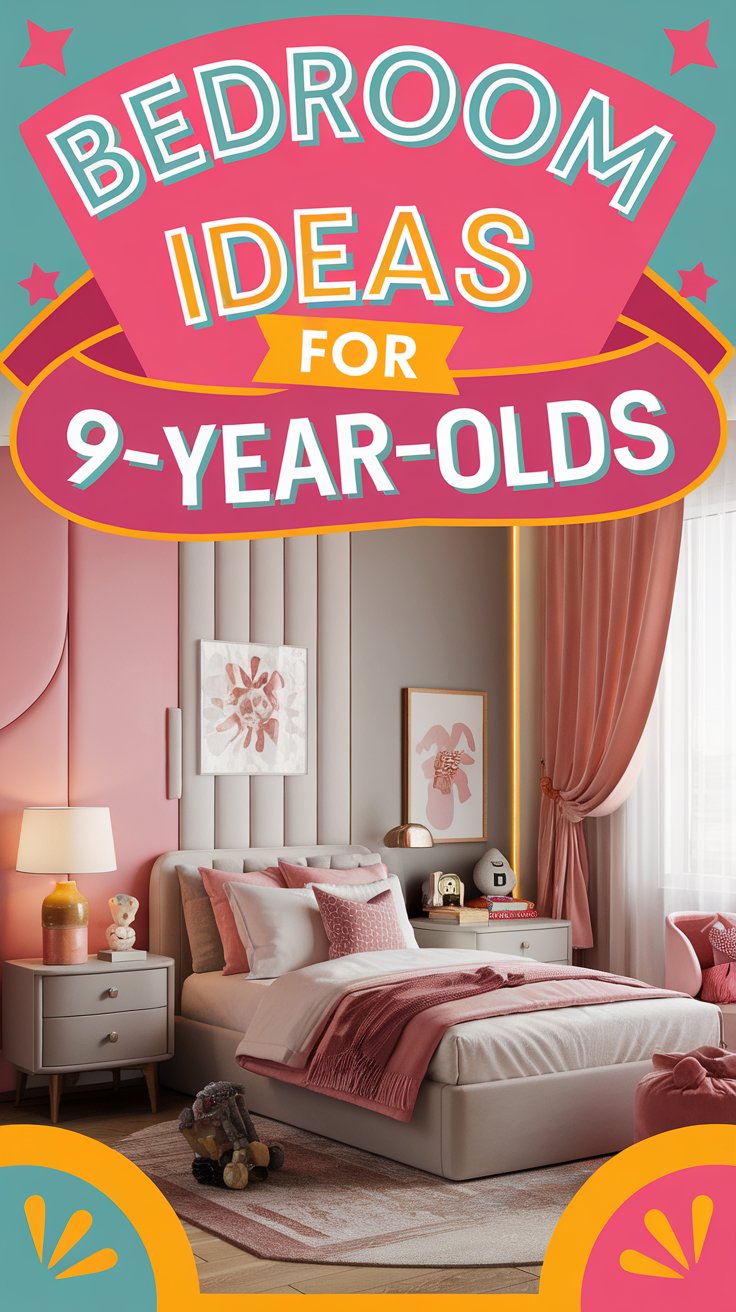10 Inspiring Bedroom Ideas for 9-Year-Olds to Spark Creativity and Comfort
Designing a bedroom for a 9-year-old involves balancing functionality with personal expression. At this age, children are developing their unique tastes and require a space that reflects their personality while accommodating their daily activities. Below are ten inspiring ideas to help you create a bedroom that fosters creativity, comfort, and growth.
- 1. Incorporate a Loft Bed for Space Optimization
- 2. Personalize with Themed Decor
- 3. Create a Cozy Reading Nook
- 4. Utilize Multifunctional Furniture
- 5. Incorporate Bold and Cheerful Colors
- 6. Add Interactive Elements
- 7. Display Personal Artwork and Achievements
- 8. Implement Smart Lighting Solutions
- 9. Designate Zones for Different Activities
- 10. Incorporate Growth-Friendly Design
- Helpful Resources
1. Incorporate a Loft Bed for Space Optimization
Loft beds are excellent for maximizing floor space in a child’s bedroom. By elevating the sleeping area, you create additional room underneath for a desk, reading nook, or play area. This setup not only saves space but also adds an element of fun and adventure. For instance, a 9-year-old boy’s bedroom makeover featured a loft bed with a cozy area beneath for activities, making the room both functional and inviting.
Pro Tip: Ensure the loft bed has sturdy guardrails and a safe ladder to prevent accidents.
2. Personalize with Themed Decor
Encourage your child’s interests by incorporating themed decorations. Whether it’s space exploration, dinosaurs, or a favorite book series, themed decor can make the room feel uniquely theirs. Wall decals, bedding, and accessories related to the theme can tie the room together without requiring a complete overhaul.
Pro Tip: Choose removable wall decals and accessories to easily update the theme as your child’s interests evolve.
3. Create a Cozy Reading Nook
Foster a love for reading by setting up a dedicated reading corner. A comfortable chair or bean bag, good lighting, and accessible bookshelves can make this spot inviting. This encourages relaxation and learning within their personal space.
Pro Tip: Add a canopy or tent over the reading area to create a sense of privacy and adventure.
4. Utilize Multifunctional Furniture
Furniture that serves multiple purposes is ideal for children’s rooms. Beds with built-in storage drawers, fold-out desks, and ottomans that double as storage bins help keep the room organized and spacious.
Pro Tip: Label storage bins to make it easier for your child to find and put away items, promoting organization skills.
5. Incorporate Bold and Cheerful Colors
Bright and cheerful colors can stimulate creativity and energy. Consider using vibrant hues on one accent wall or through accessories like rugs, curtains, and bedding. This approach allows for color without overwhelming the space.
Pro Tip: Involve your child in choosing the color scheme to ensure it reflects their personality and preferences.
6. Add Interactive Elements
Incorporate elements that encourage play and creativity, such as a chalkboard wall, climbing wall, or swing chair. These features can make the room more engaging and cater to your child’s active imagination.
Pro Tip: Ensure all interactive elements are safely installed and appropriate for indoor use.
7. Display Personal Artwork and Achievements
Create a gallery wall to showcase your child’s artwork, certificates, and photos. This not only personalizes the space but also boosts their confidence and sense of accomplishment.
Pro Tip: Use easily changeable frames or clipboards to update the display regularly with new creations.
8. Implement Smart Lighting Solutions
Good lighting is essential for both functionality and ambiance. Layer different types of lighting, such as overhead lights, task lamps, and string lights, to create a warm and versatile environment.
Pro Tip: Consider dimmable lights to adjust the brightness according to different activities and times of day.
9. Designate Zones for Different Activities
Organize the room by creating specific zones for sleeping, studying, playing, and relaxing. This helps your child understand the purpose of each area and promotes a structured environment.
Pro Tip: Use rugs or furniture arrangement to visually separate the different zones within the room.
10. Incorporate Growth-Friendly Design
Choose furniture and decor that can adapt to your child’s growing needs. Opt for adjustable desks, neutral furniture pieces, and decor that can be easily updated to suit changing tastes. For example, designing a room with a versatile daybed alongside a traditional bed can accommodate both current and future needs.
Pro Tip: Invest in quality, timeless pieces for larger furniture items, and use accessories to reflect current interests.
By implementing these ideas, you can create a bedroom that not only meets your 9-year-old’s current needs but also grows with them, providing a comfortable and inspiring space for years to come.
Helpful Resources
- https://www.bhg.com/bunk-rooms-11692495?utm_source=chatgpt.com
- https://nestingwithgrace.com/9-year-old-boys-bedroom-makeover-with-loft-bed/?utm_source=chatgpt.com
- https://www.reddit.com/r/interiordecorating/comments/1cqi43l/how_can_i_make_my_sons_small_bedroom_feel_special/?utm_source=chatgpt.com
- https://www.thetimes.co.uk/article/at-home-with-john-lewiss-interiors-guru-and-his-husband-sb6rmsh98?utm_source=chatgpt.com
- https://www.housebeautiful.com/lifestyle/kids-pets/tips/g1421/designer-childrens-bedrooms-0613/?utm_source=chatgpt.com
- https://www.housebeautiful.com/lifestyle/kids-pets/g24487350/girls-bedroom-ideas/?utm_source=chatgpt.com

